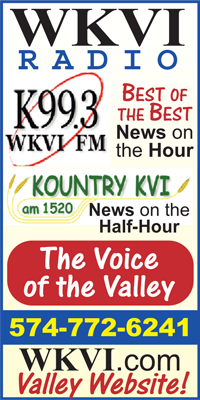Low unemployment could mean trouble for businesses seeking workers
- Details
- Published: Tuesday, 21 July 2015 20:50
INDIANAPOLIS – The state’s unemployment rate dropped below 5 percent in June for the first time in more than seven years as the state’s labor force continued to expand.
The rate – which measures the number of people who are actively seeking work but unemployed – fell to 4.9 percent from 5.1 in May. That’s the third consecutive month of decline.
Experts say the rate is now so low that it might actually begin causing problems for Indiana employers.
“We are going to hear a lot about worker shortages over the next year as businesses scramble to fill jobs,” said Michael Hicks, an economics professor at Ball State University. “But in terms of job growth and labor force growth, Indiana continues to sit near the top nationally on any measure.”
Indiana ranks second in the nation in manufacturing job growth since June 2009, the low point of employment in Indiana. And the state’s 3.5 percentage point decline in the unemployment rate since January 2013 is the second largest decrease in the nation.
“Indiana’s economy is on the move thanks to hard-working Hoosiers and businesses both large and small,” Gov. Mike Pence said in a statement released Tuesday. “With each passing day, it becomes more apparent that Indiana is strong and growing stronger, and now, for the first time in more than seven years, Indiana’s unemployment rate is below 5 percent.”
Michael Hicks, economics professor at Ball State University, attributed the low jobless rate to the current economic cycle.
“The lowest unemployment rate always usually recurs right at the beginning of a recession and at the end of a recovery so we’re back to what economists call full employment,” Hicks said. “That means the only people looking for a job are those people who are losing in the friction of labor markets. It’s just a natural rate of turnover.”
Hicks also said that while the low unemployment rate is a good thing for employees, sometimes for businesses it can be mixed.
“If you’re a business you would like to not have to pay workers more of course,” he said. “But at the same time most businesses are looking for the demand in goods to rise as more people are working. So it’s general a happy indicator.”
He suggests businesses should increase wages and/or benefits in order to retain employees.
But despite the good news, Tuesday’s report also showed that the state’s private sector employment contracted in June by about 3,800 jobs. The losses were led by declines in the trade, transportation and utilities sector and private educational and health services.
And Democrats complained that the jobs Hoosiers are getting don’t pay as much as they used to. Drew Anderson, a spokesman for the Indiana Democratic Party, said Indiana wages are now 1.6 percent lower than they were in 2008 and “hardworking Hoosiers aren’t growing stronger every day nor are they feeling this economic ‘momentum’ Gov. Pence describes each month.”
“Fact is, Mike Pence simply isn’t driving the bus with Indiana’s economy,” he said. “And we are witnessing the consequences as everyday Hoosiers continue to fall behind the rest of the nation. Hoosiers know we can do better, and it begins by removing Mike Pence as our governor.”
Still, Indiana’s unemployment rate in June was lower than the national rate of 5.3 percent and lower than the rates in neighboring states.
Jerry Conover, director of the Indiana Business Research Center, says that means employers need new tactics to find good workers.
“There was a national survey of business economists that found the companies are expecting a tighter labor market in the coming months which means they have to work harder to find the right, qualified candidates to fill their positions,” he said. “And that can mean the cost of labor can get higher, they have to pay more to attract the talent they need.”
Conover said that would be a downside to a low unemployment rate, but the flipside would be positive for those looking for jobs with the right. He still said the low unemployment rate is a welcome figure for Indiana.
“It’s the lowest rate we’ve had in many years,” Conover said. “It indicates jobs are growing in Indiana, that there are more opportunities for people who are looking for work to take advantage of and start getting paychecks coming in again and that’s all very positive for the Hoosier economy.”
Article writer Amanda Creech is a reporter for TheStatehouseFile.com, a news website powered by Franklin College journalism students.









